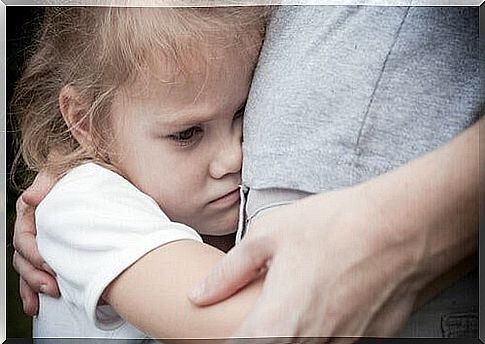Gerald Patterson And His Parent Training Model

Gerald Patterson created a parenting training model after presenting his compulsive theory. With the latter, he aimed to explain the way in which a person’s environment influences the onset of disruptive behavior. Believe it or not, most psychological problems observed in children and adolescents are related to their environment.
Some of the factors that have a major impact on a child’s behavior are school, their peers, and their family (especially their parents). They basically shape the child over time. As a consequence of this, children learn by using their behavior as an example of how they should also be themselves.
Family models have everything to do with behavioral and disruptive disorders. In fact, it is quite common to find antisocial behavior in the families of children who develop this type of behavior. This, in turn, can be affected by their socioeconomic status, conflicts between parents, poor parenting skills, or even neglect.
One of the most important variables has to do with the way parents give orders to their children. When we evaluate a family after discovering that their child is suffering from behavioral problems, then we will most likely find very critical parents who tend to give orders in a confusing, humiliating or angry way.
Two different types of orders: Alpha and Beta
Alpha orders are clear, feasible, and associated with the child’s motor skills. This could be, for example, when you ask them to put on shoes or lower their voices.
Beta orders, on the other hand, are vague, scattered, and difficult to obey. This certainly makes it difficult for the child to learn specific behavior patterns associated with obedience. Some examples of beta orders are: “Behave properly” and “Do not do it”. The child may want to think, “What is ‘proper’?” or what do you mean?”.

Gerald Patterson’s coercive theory
Patterson’s compulsive theory explains how a child’s family environment is capable of influencing their behavior. To be able to do this, the author has used a simple but effective method. He carefully analyzed a video that showed a child’s behavior at school and the same child’s interaction with the parents at home.
His theory explains how antisocial patterns manifest in family dynamics. Patterson noted that children who use aggressive behaviors such as tantrums get what they want.
As a result, these behavior patterns become positively amplified when the child gets what they want. But there is also negative reinforcement. The child feels less anxious when they get what they want and they avoid facing unwanted situations.
That said, children can use reluctant behavior to their own advantage. The name of this course is called coercion. The explanatory role of negative reinforcement is quite noticeable in coercive processes that exist in parent-child relationships.
Through this theory, we can conclude that punishment is counterproductive. While some parents may think that it suppresses compulsive behavior, it actually does the opposite: It makes it worse. Positive punishment offers a dysfunctional problem-solving model from which the child does not learn anything positive.

Patterson’s parent training model
In line with his compulsive theory, Patterson developed a parenting training model. The goal of this is for parents to learn how to properly handle their environment and not fall into the trap of negative reinforcement.
This program has excellent benefits. The child gets used to the discomfort and develops strategies to tolerate frustration in an appropriate way. Likewise, parents learn to endure their child’s tantrums without giving in right away.
At a cognitive level, the child learns that tantrums aimed at gaining reinforcement (being allowed to watch TV for extended periods of time, getting sweets, getting rid of going to school, etc.) are useless. In addition, they internalize the idea that they can not always get what they want.
But Gerald Patterson’s parenting training model may be difficult for some families, which can make them give up far too easily. For this reason, it is imperative for parents to be aware that they will get results over time once they have applied the established measures in a precise manner.
This intervention is most likely to give good results as long as the parents persist. The child will benefit from improved self-confidence by learning and accepting boundaries, and the parents will stop feeling guilty when they do not make the child happy right away.









